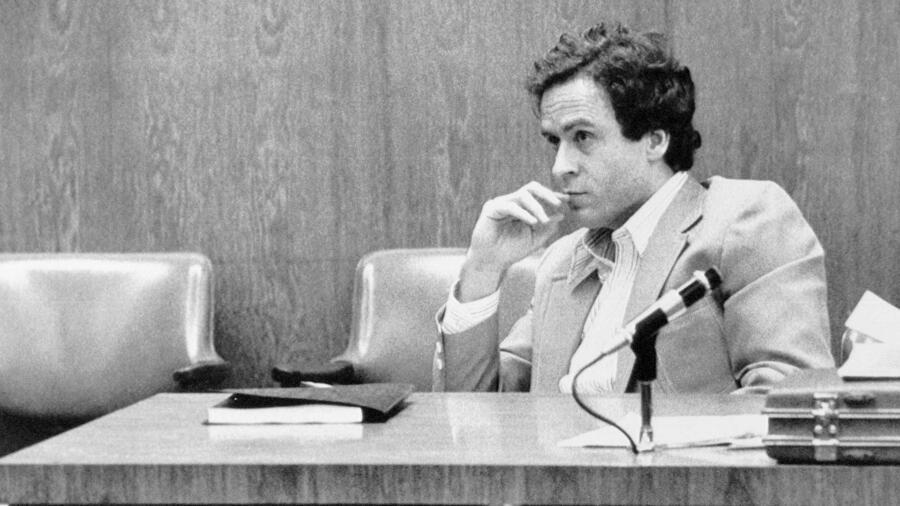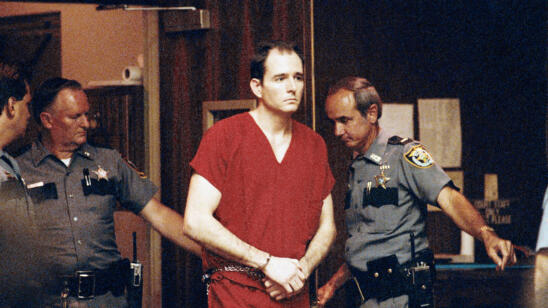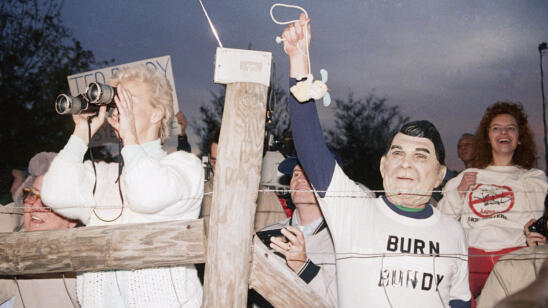One of the most notorious serial killers in modern history, Ted Bundy was known for his good looks and uncanny ability to charm and deceive everyone around him.
His younger cousin, Edna Cowell Martin, used to admire Bundy, who’d bring groceries to her and her college roommates, and fascinate them with stories about his work with the Seattle Crime Prevention Advisory Commission in the 1970s.
She had no inkling that all the while, he was violently abducting, raping and murdering women.
Now in her 70s, Cowell Martin, co-author with Megan Atkinson of Dark Tide: Growing Up with Ted Bundy, speaks to A&E True Crime about her relationship with her cousin, her initial inability to believe he could be a killer and the moment she came to that horrific realization.
What was your relationship with Bundy like growing up in Washington?
We had a cabin on Puget Sound [in Washington state] where we’d have great family gatherings every year. Then my family moved to Arkansas; I was there for six years. I came back to Washington in 1973 for my last two years of college and that’s really when we became close. We became buddies.
I lived in an apartment in Seattle with roommates and he came by frequently. We were poor college students, so he would bring us groceries, and he loved regaling us with stories about the jobs he had. We would all look at him with awe.
He’d take me for rides in his [Volkswagen Beetle], the same car where he was transporting women to their death. Even now, it almost makes me feel ill to think about it.
[Stream Invisible Monsters: Serial Killers in America in the A&E App.]
What was his personality like with family and friends?
He was really cheerful and gregarious, and always really put together. I was into student attire—bell bottom jeans and casual tops—but he was always buttoned up, with a sweater draped over his shoulders. He was good looking and very approachable. He knew how to disarm people—that was his tool.
Did you ever notice any signs of his propensity for violence toward women?
He was always very nice toward women, but I did see something that really threw me off once.
I was at my apartment with my roommate, and he showed up with a bag of groceries. We fixed dinner, then we put on records and we were dancing. I put on another record and when I turned around, he and my roommate were slow dancing. She had her head on his shoulder and he was looking down on her. He looked so mean and angry. His jaw was clenched and his eyes, normally a really deep blue or bright blue, were completely black. They changed in color.
I have since found out that pupils can dilate in anger. I yelled out, ‘Ted, are you OK?’ I had to stop the record and yell again. And all of a sudden, he was like, ‘Oh, everything is fine.’ He said he had to go and left. I never forgot that incident, because it was so out of character.
His crimes hit pretty close to home for you, right?
Four of the women who disappeared were right in the University District where I lived.
Lynda Ann Healy [Bundy’s first accounted victim, who disappeared in February 1974] was one of my roommate’s best friends. One of the women he brutally attacked and left for dead was just around the corner from me.
We were always reading the newspapers because we were terrified. When he abducted two women at Lake Sammamish [in July 1974], eyewitnesses heard the name ‘Ted’ and saw a VW Bug. That was a very popular car. There was a composite sketch [of the killer] in the newspaper…but not even in our wildest dreams did we think it was him.
How did you find out about his crimes?
After I graduated college, I worked as a receptionist for an orthodontist, then I went to work in Alaska for three months during the crab season. I had a call, so I had to step off the packing line and go up to the bridge to take it. It was my brother; he told me that Ted had been arrested in Utah for the attempted abduction of Carol DaRonch and I thought, ‘Oh my God, this isn’t possible. There must be some mistake.’
Did you have contact with him after his arrest?
When I got back from Alaska, he was out on bail. I picked him up, and we met my friends for lunch. One guy looked at Ted and he said, ‘You’re not THE Ted Bundy?’ and he goes, ‘Yeah, that’s me,’ with a lot of pride in his voice. I was shocked. I looked at him, and he was smiling. That was my first clue.
Was there a moment when you knew for sure?
Just a little bit later. I went to the store, and he stayed in my car in the parking lot. All of a sudden, I saw people rushing down toward the corner, so I got over there and he was standing in the middle of the crowd, his arms out like a Messiah, proclaiming loudly, ‘I am Ted Bundy.’ That was it for me.
Did you see him again after that?
After that, we only communicated via phone and letter.
How did you feel when he was executed?
I was devastated, because I was grieving for the person he could have been. I understood why people wanted him executed, but it was still a tough time.
How did all of this affect you over the years?
I think it’s human nature to take things and put them in a dark box and try to shove them in a basement somewhere. That’s what I did, even if it was hard to do, because [Bundy and his crimes] keep popping up in pop culture.
Family and friends knew I was related to [Bundy], and they all advised their kids not to ask me about it. I had a great life. I had lots of laughs—my husband is hysterically funny, thank God for him. When [Bundy] was executed, my daughter was 12, and I didn’t really have a conversation with her about this until writing this book.
Why did you decide to write this book?
During the COVID-19 pandemic, I had a lot of time to myself. It was such a burden carrying this and not talking about it. Talking about this has been the best thing for me. It was such a relief to get this off my chest and have it see the light of day. I get to tell my story my way, and it’s about our family and what kind of impact [Bundy’s crimes] had on us. They still haven’t found the remains of some of those young women; that still really disturbs me.
Related Feature
Ted Bundy’s Childhood: Lonely Boy to Window Peeper to Serial Killer
Ted Bundy’s Many Faces: How the Serial Killer Was Able to Change His Appearance So Easily
What Was Ted Bundy’s Execution Like?


